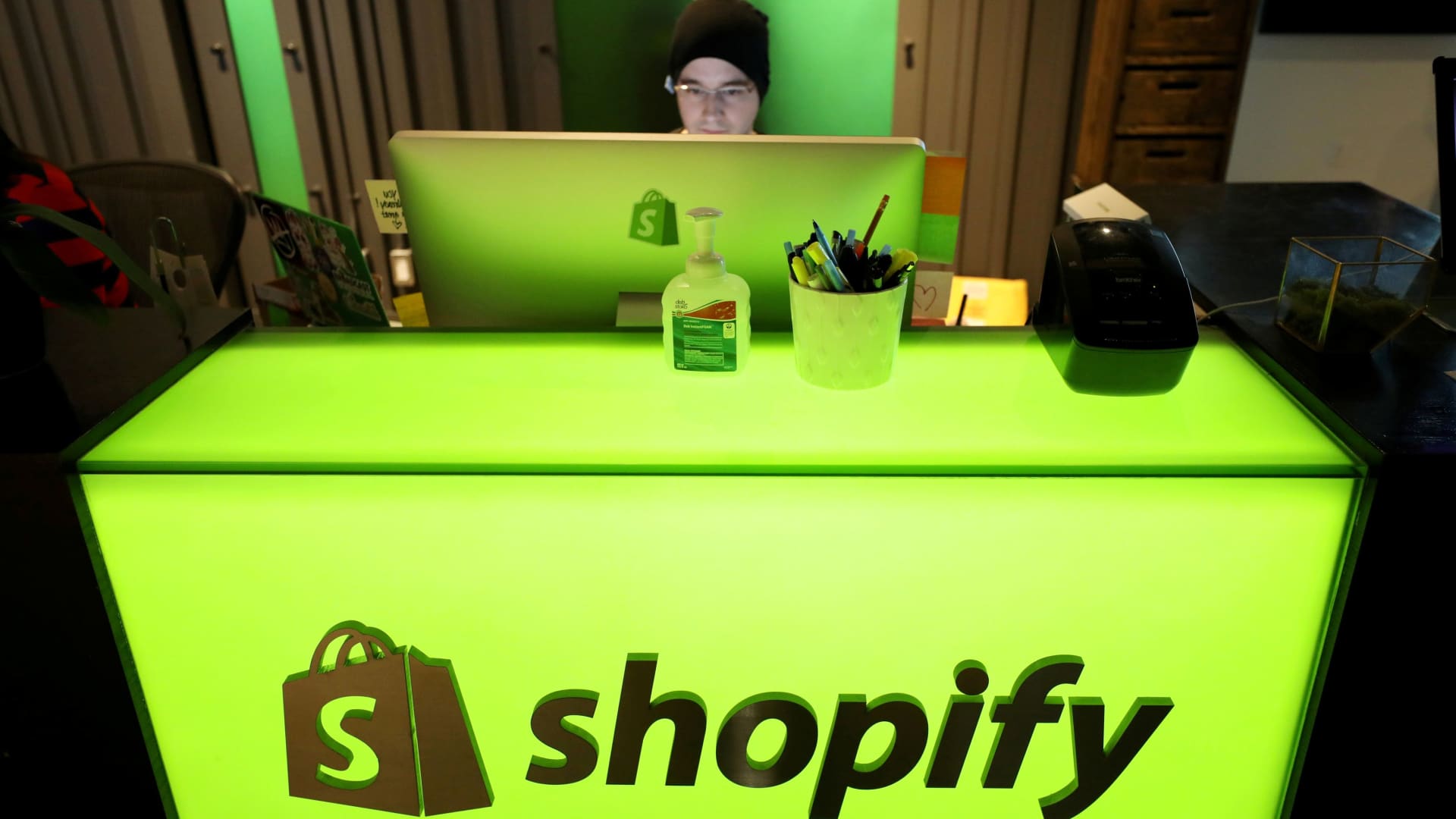
An employee works at Shopify’s headquarters in Ottawa, Ontario in Canada.
Chris Wattie | Reuters
Shopify on Tuesday reported better-than-expected sales for the fourth quarter but missed on earnings. Shares whipsawed in premarket trading.
Here’s how the company did:
- Earnings: 39 cents per share vs. 43 cents per share expected by LSEG
- Revenue: $2.81 billion vs. $2.73 billion expected by LSEG
Shopify forecasted revenue in the first quarter to grow at a mid-20% percentage rate, which is roughly in line with analysts’ expectations of 24.4% revenue growth, according to LSEG.
“We expect the strong merchant momentum from Q4 to carry over into Q1, recognizing that Q1 is consistently our lowest [gross merchandise volume] quarter seasonally,” the company said in its earnings release.
The first quarter includes the results of the holiday shopping season. Online spending jumped nearly 9% to $241.1 billion in November and December, according to data from Adobe Analytics, which tracks sales on retailers’ websites. That was slightly higher than analysts’ forecast for sales of $240.8 billion.
The company said it expects operating expense as a percentage of revenue to be 41% to 42% in the current quarter. That’s a step up from 31.5% in the fourth quarter.
Net income nearly doubled to $1.3 billion, or 99 cents per share, from $657 million, or 51 cents per share, a year ago.
Revenue in the fourth quarter jumped 31% from $2.14 billion in the same quarter a year earlier.
Gross merchandise volume, or the total volume of merchandise sold on the platform, came in at $94.5 billion. Analysts surveyed by FactSet were looking for GMV of $93 billion.
Shopify sells software for merchants who run online businesses as well as services such as advertising and payment processing tools. The company has made its name as a platform for small businesses and direct-to-consumer brands to launch online storefronts. More recently, it has looked to attract bigger customers, such as Reebok, Mattel and Barnes & Noble, as a way to boost its growth.






